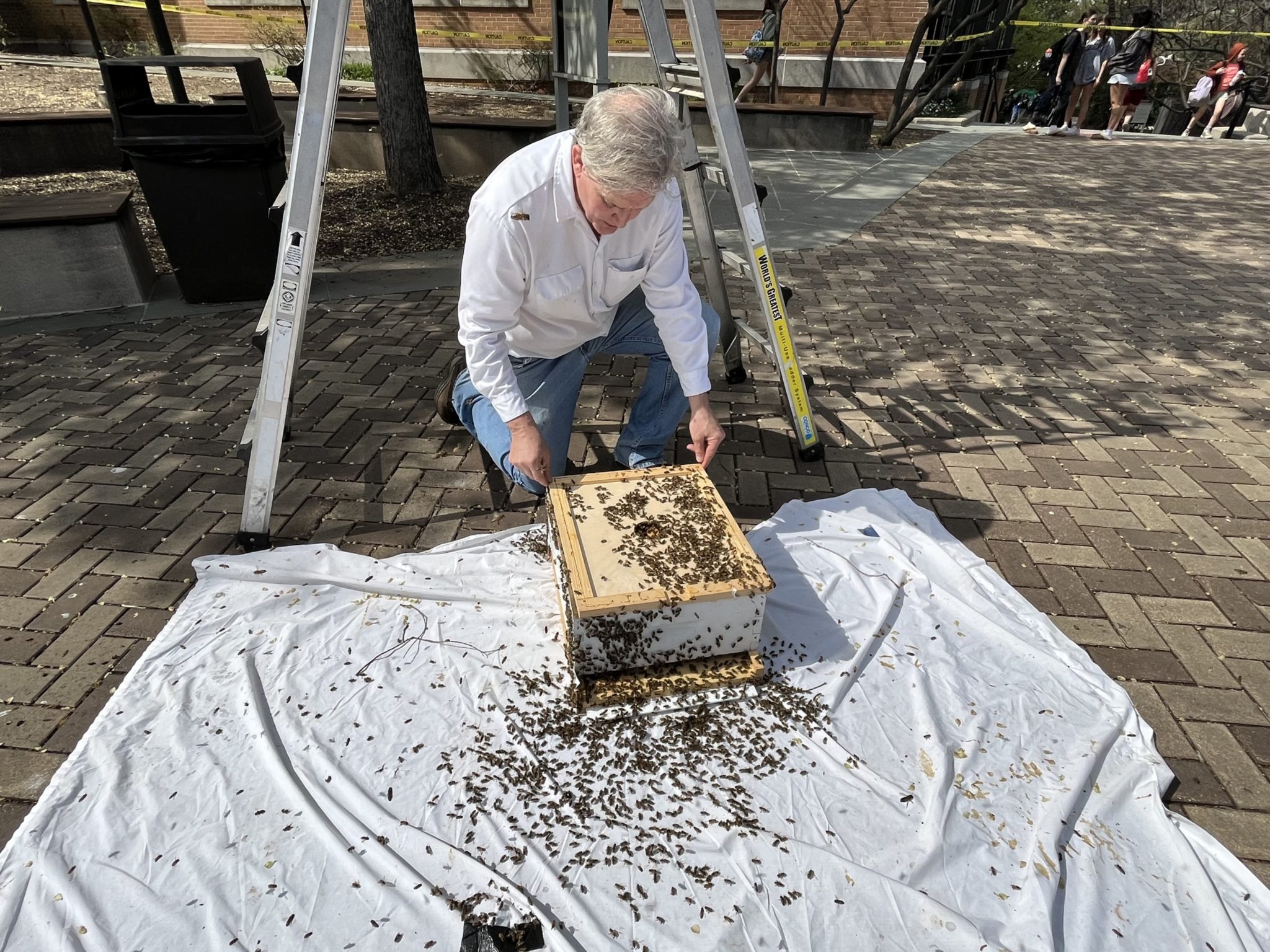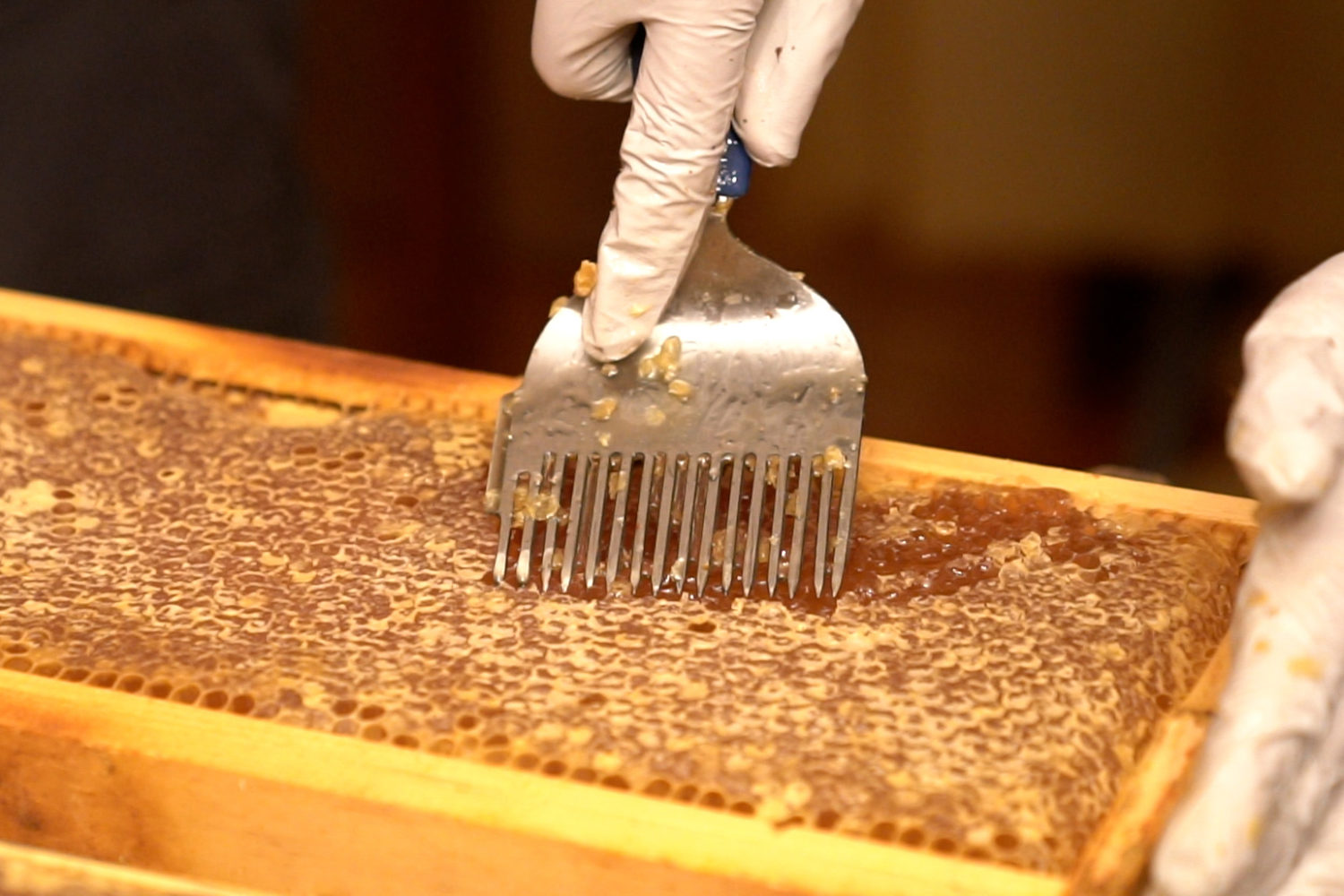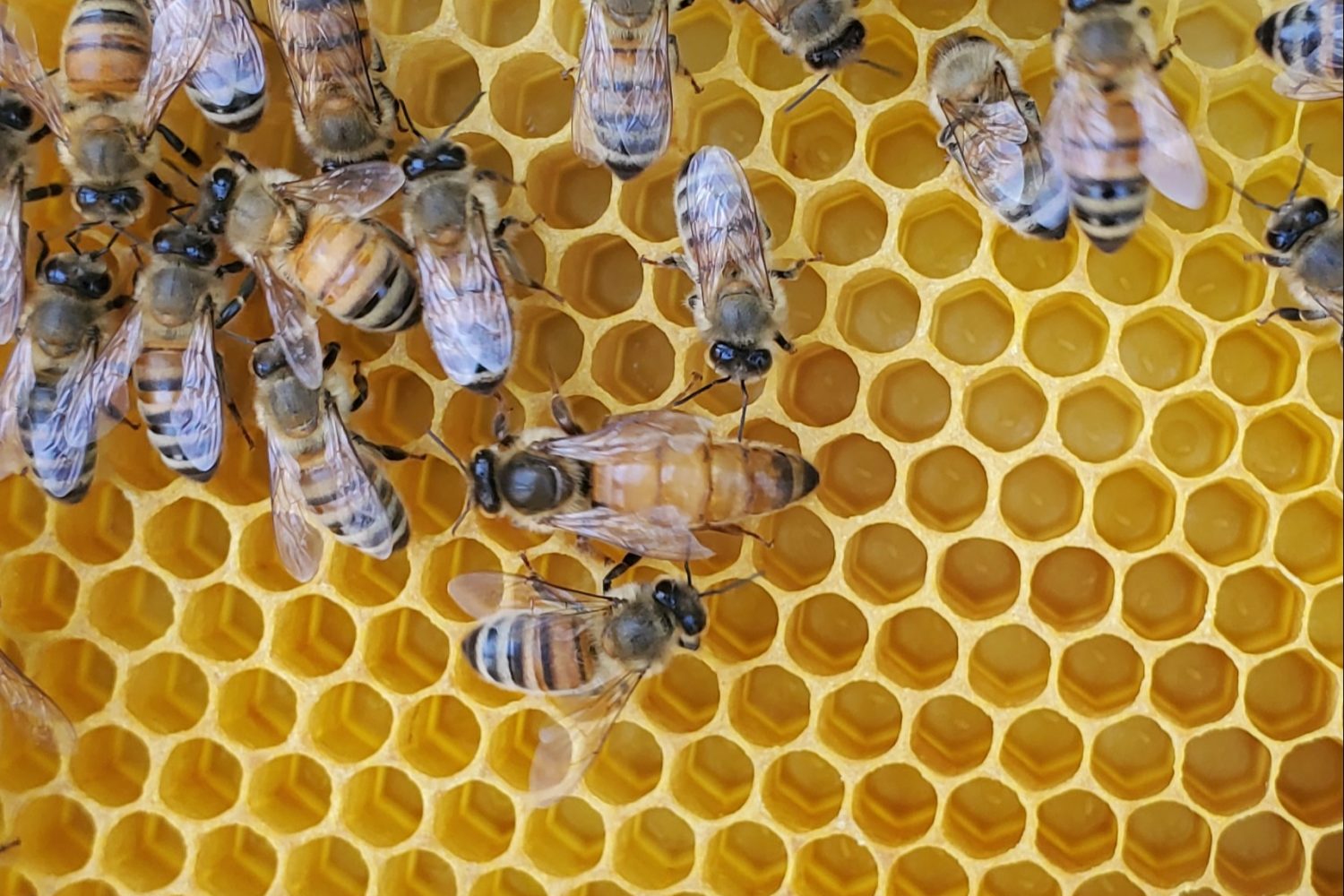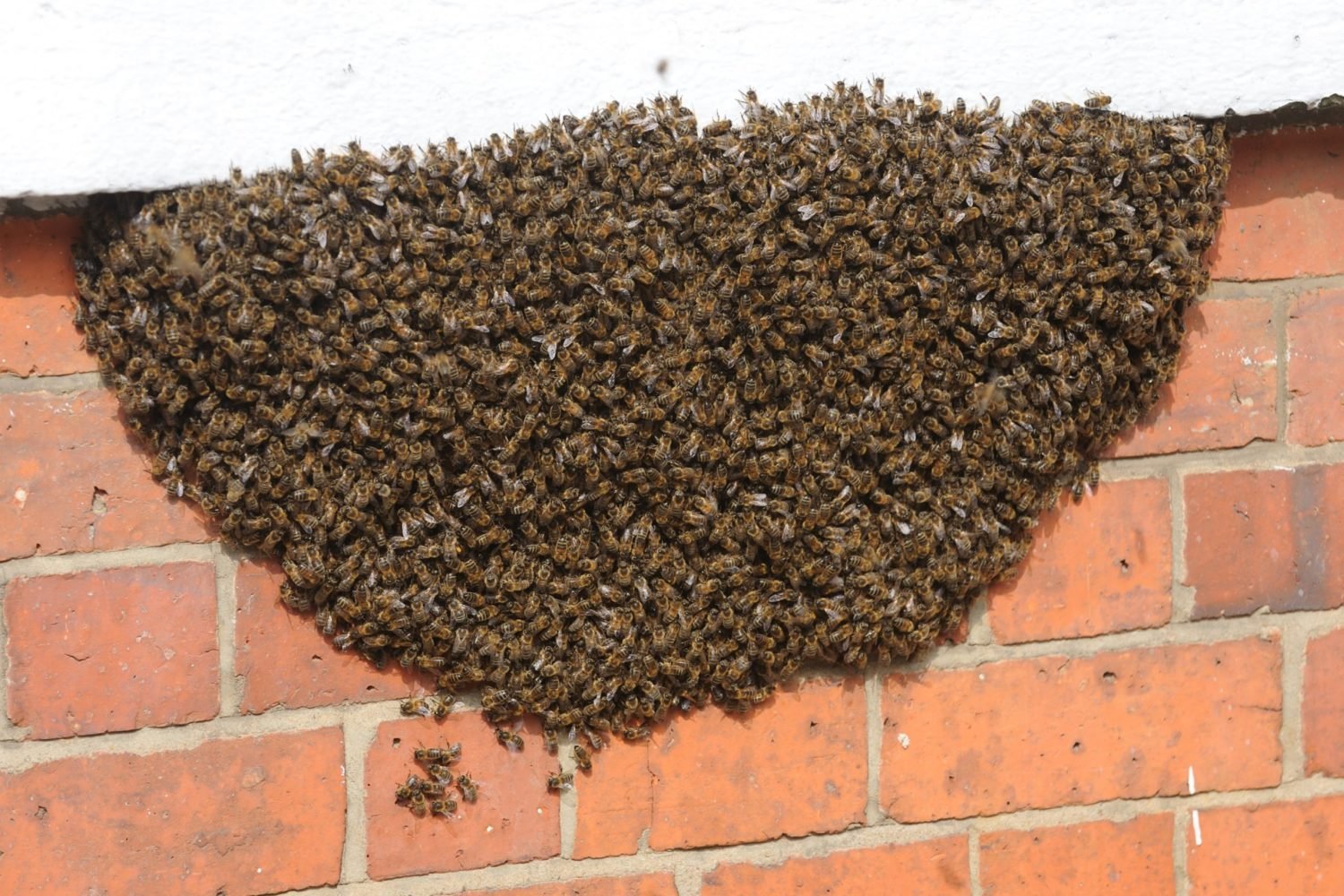I’m on a Red Line train home when my phone buzzes. On the other end, a chipper voice greets me: “Are you ready to go catch some bees?”
The voice belongs to Sean Kennedy, a member of the DC Beekeepers Alliance’s Swarm Squad, a volunteer group in charge of corralling errant bees in the District. He was the first to respond to a message in the group’s WhatsApp, which had flagged a swarm on Wisconsin Avenue. Half an hour later, I’m meeting Kennedy in front of his pickup truck outside Sidwell Friends School.
Kennedy leads me to the school’s courtyard. What was once the backdrop of Sasha and Malia Obama and Chelsea Clinton’s school years now looks more like a crime scene, with yellow CAUTION tape surrounding a tall tree at its center. Our target is on an outstretched limb.

Kennedy, an Iowa native, tells me he also has a bit of presidential history as he unloads his truck: he volunteered with Bill Clinton’s 1992 campaign before moving to DC as a political appointee to the Energy Department. The self-described “lifelong naturalist” now runs his own energy company, traveling back and forth from Ukraine to help rebuild their infrastructure in the wake of war with Russia—and, when he has a spare moment in the States, trapping bees.
While a throng of students and teachers gather beyond the yellow tape, Kennedy reassures them that the bees aren’t aggressive—they’re just looking for a new home. They’ve temporarily sheltered in the tree branch in a process known as “bivouacking,” like a hiker taking refuge on a mountain. Whether this is a feral colony, or some beekeeper’s hive on the lam, Kennedy can’t tell. But he is here to help give them a new home.
Wearing only a protective bonnet, Kennedy places a wooden box—a temporary hive—on a tarp below the swarm, and begins to climb his ladder. Using a long hook, he grabs one end of the branch.
“What we try to do is get the queen bee,” Kennedy says. “Get the queen, and everyone else will follow.”
Kennedy gives the branch a firm tug, and, like knocking over a glass of water, thousands of bees spill into the air below. About a third descend on the tarp, marching into Kennedy’s wooden hive. The others congregate back on the tree branch. No queen yet.
One bee made its way inside Kennedy’s shirt, he tells after he comes down. It’s a fairly regular occurrence; he’d been stung six times the day before. Early spring is prime swarm season, and Kennedy gets several more WhatsApp alerts during our two hour mission.
A second round of yanking at the branch proves as successful as the first, so we head inside Sidwell to survey the situation. We’re in a room with a Post-It affixed to the entrance: “DOOR IS CLOSED BECAUSE OF BEES.” It’s then that I notice something writhing in my hair. I pull out a thorax. As I toss out the carcass, Kennedy notes it’s important to catch bee swarms early, lest they take refuge in an unwanted location—like the walls of a school, or in a hapless reporter’s hair.
We make our way outside, and see that the tree is now nearly depleted of bees. Many of the bees on the tarp have their little butts in the air, with wings fluttering faster than the eye can register. They’re giving off pheromones, Kennedy says, and alerting their hivemates to the queen’s location (presumably, in the box). Mission accomplished.
We wait a few minutes for the last stragglers to make their way into the box. Meanwhile, Kennedy shows me pictures of the bee rescue he had undertaken the night before, where he climbed the awning of a storefront and used a special bee vacuum in order to reach the critters. The school bell rings and hundreds of students spill out into the courtyard. “Oh my God, that’s literally so many bees,” I hear a kid say.
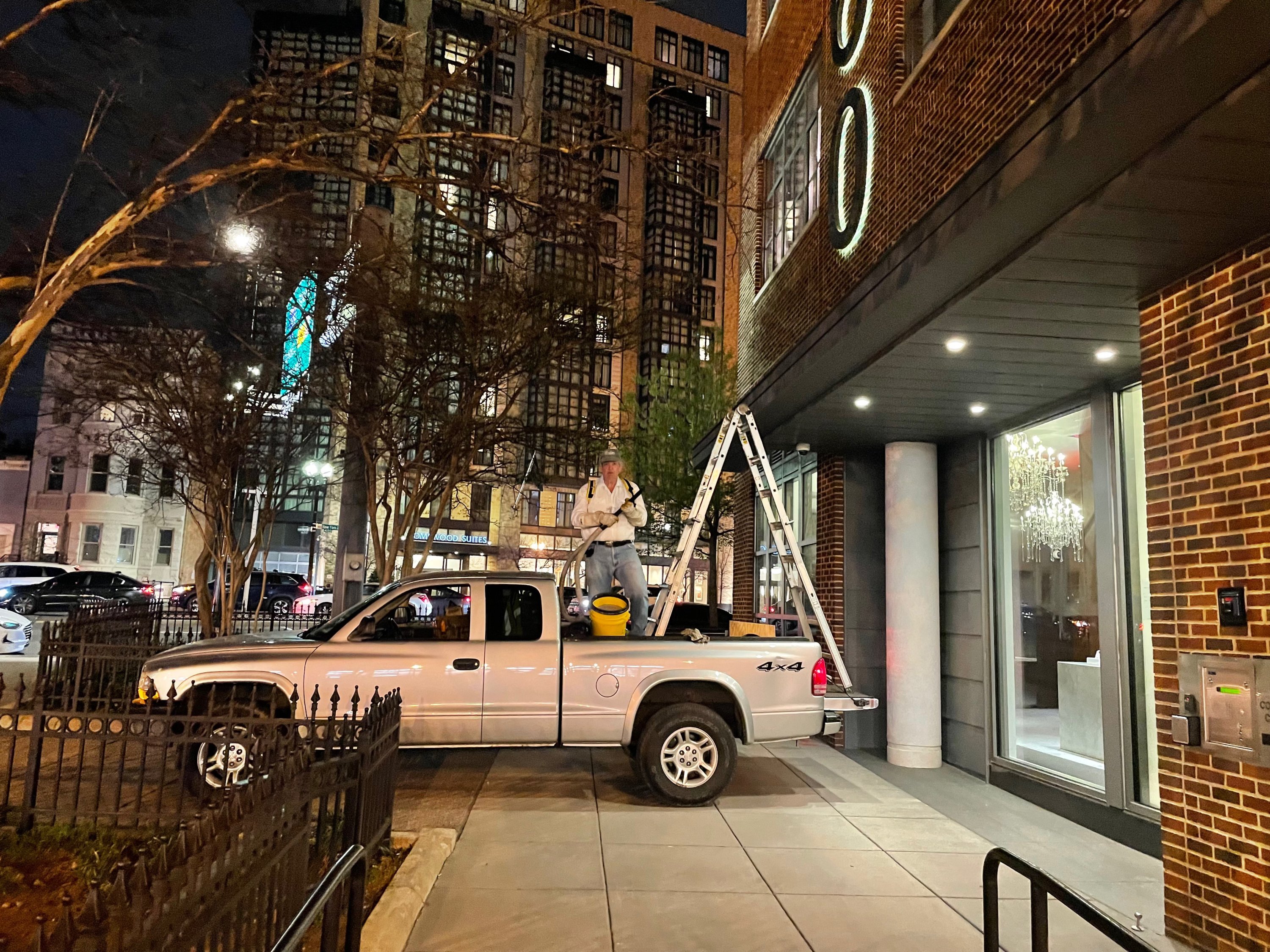
Kennedy’s next move is to wrap the box in the tarp, a process he calls “burrito-ing,” then load it into his pickup truck. Now, we’re heading to the bees’ new home: the Swiss Embassy, an unlikely sanctuary for errant bees. The ambassador met Kennedy by chance, and after chatting agreed to host the bees on embassy grounds. “It was very much in keeping with his idea of making the Embassy ground more natural and more of a natural habitat,” Kennedy says.
Kennedy now has about 20 hives in “asylum,” as he puts it, at the embassy. (At one point, he had 40, but that proved to be too many bees for him to have time to check on.) About once a year, they sell the honey from the embassy’s bees out of its back gate. There’s a one jar limit per person, and Kennedy says they regularly sell out their stock of 500 to 700 jars within a few hours.
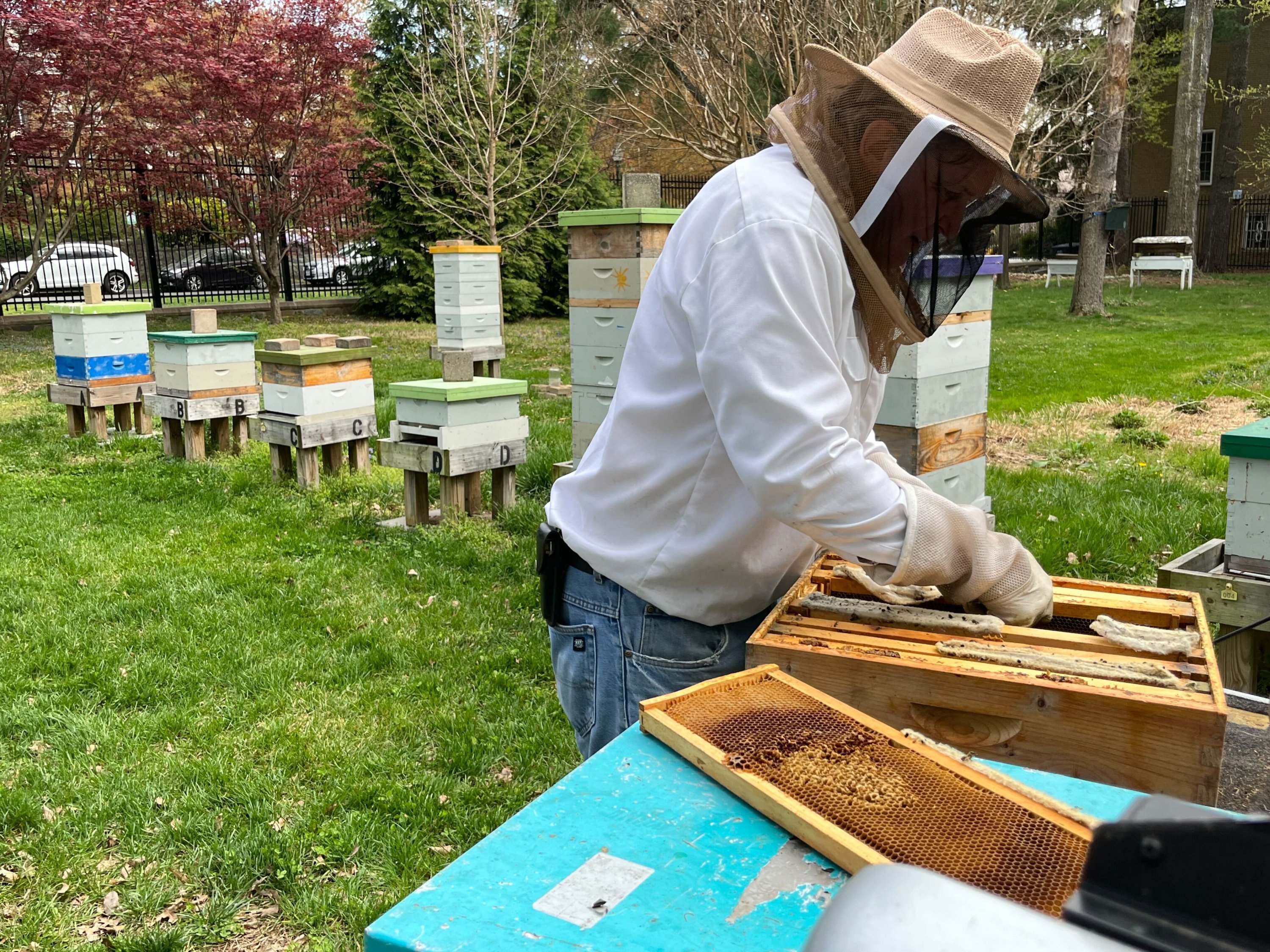
Photograph by Arya Hodjat.
“How do you avoid getting stung?” I’d asked Kennedy earlier. He laughed: “What do you mean, avoid getting stung?”
Indeed, here at the embassy, after Kennedy has unwrapped his “burrito,” the insects are less docile. I get stung—twice. Yet, as Kennedy reminded me in a phone interview before our expedition, bees only sting when they’re provoked—they’re either protecting themselves, or protecting their hive. He says that makes it all the more important we leave bee control to pros like the Swarm Squad.
“Don’t spray ’em, don’t shoo ‘em away…just let the little things be,” Kennedy said. “We all, as a beekeeping community, feel responsible to rehome lost bees.”

